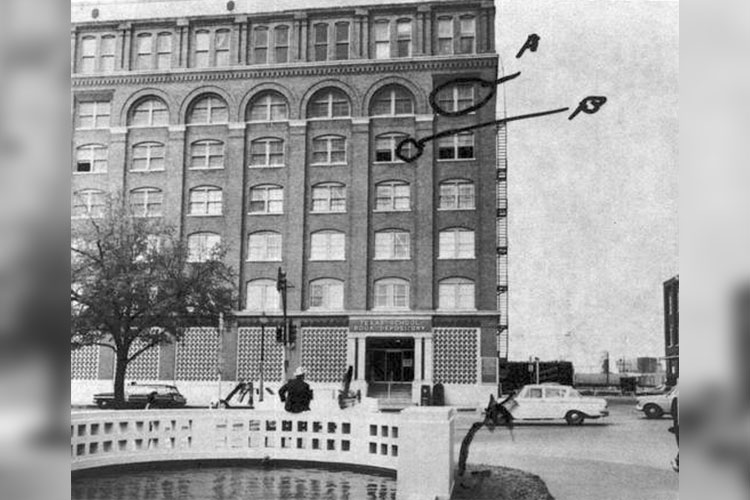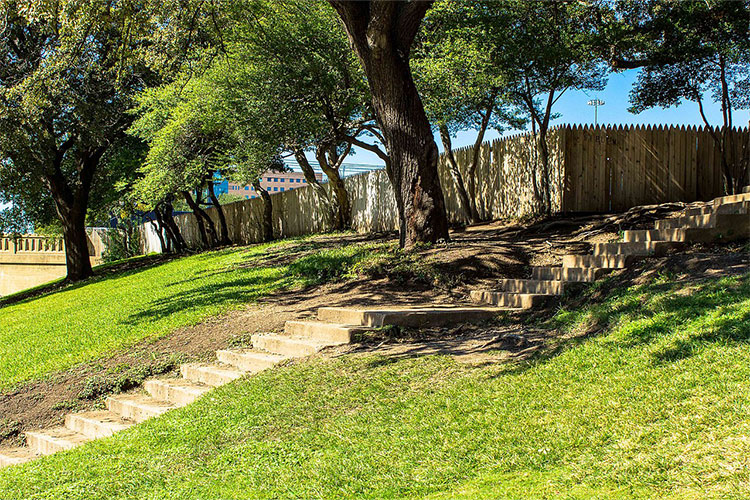JFK’s Assassination: The Leading Conspiracy Theories

2023 marks 60 years since President John F. Kennedy was assassinated in Dallas at 12.30pm on 22 November 1963, as his open-topped limousine moved through Dealey Plaza – an event which continues to spark fascination.
Thousands of government files were kept under wraps for decades (and hundreds still are) fuelling many unproven conspiracy theories as to who might have killed America’s president – and why. Here we explore highlight some of the leading ones.
Emergence of conspiracy theories
Prime suspect, Lee Harvey Oswald, was implicated due to his actions before and after the assassination. His swift departure from the Texas School Book Depository, subsequent shooting of police officer Tippit, and capture in a theatre fuelled these suspicions. However, Oswald’s claim of being a “patsy” before being fatally shot by Jack Ruby added to the mystery surrounding JFK’s assassination.

Jack Ruby shoots Lee Harvey Oswald, 24 November 1963
Image Credit: Wikimedia Commons / Robert H. Jackson / Public Domain
A week after Kennedy’s assassination, President Johnson launched an inquiry. After a thorough investigation, The Warren Commission’s report concluded that Oswald acted alone. The ‘magic bullet theory’ which stated that one bullet caused multiple injuries, supported this narrative. However, scepticism grew, with critics doubting its single bullet theory.
This was further catalysed by the Zapruder film – amateur film footage of Kennedy’s assassination – which aired on TV in 1975, and sparked speculation of a second gunman due to Kennedy’s head seeming to knock backwards rather than forwards upon being shot. This led to the House Select Committee on Assassinations, who, in 1979, suggested a high probability of a conspiracy, without naming accomplices.
Intriguingly, the Committee also sealed many of its findings for 50 years. By this time, Vietnam and Watergate had eroded trust in government, so the withheld information amplified suspicions of a cover-up, fostering widespread cynicism towards official reports.
The top conspiracy theories
There are too many conspiracy theories to list, but some of the most well-known include:
Soviet Links:
Lee Harvey Oswald, a self-proclaimed Marxist, defected to the Soviet Union aged 20, but returned to the US disillusioned, along with his Russian-born wife, Marina, and a baby daughter. Speculation arose around a possible link between Oswald and the Soviets seeking revenge post Cuban Missile Crisis. However, Oswald’s well-known Russian ties and pro-Cuban sympathies make this theory improbable due to the risk of war with the US. Furthermore, both countries are said to have considered Kennedy easier to work with than Johnson.
Files released in 2021 revealed that between 27 September and 3 October Oswald had visited the Soviet and Cuban Embassies in Mexico City multiple times. Some speculate this trip may have been to plot assassination plans or his escape, amidst claims Oswald’s Marxist beliefs may have influenced his decision to target JFK.
Some theories also suggest American intelligence agencies might have been aware of Oswald’s intentions but allowed the assassination to occur due to their alleged desire to remove Kennedy from power.

Lee Harvey Oswald (centre) and unidentified others distributing pro-Castro leaflets in New Orleans, 16 August 1963. He was arrested shortly afterwards when he scuffled with anti-Castro Cuban exiles.
Image Credit: Wikimedia Commons / Originated from the report of the Warren Commission a US Government report / Public Domain
The Mob:
Some believed the mafia had helped JFK win the 1960 election by securing votes in Illinois, a key state. Subsequently, one theory links Kennedy’s unsuccessful attempt to overthrow Fidel Castro in Cuba to the continued shutdown of mafia-run casinos. Consequently his brother, Attorney General Robert Kennedy‘s crackdown on the mob, including pursuing Jimmy Hoffa, intensified tensions. Some suggest Robert’s aggressive stance inadvertently triggered his brother’s assassination, provoking a retaliatory strike.
The CIA:
One theory suggests Kennedy’s assassination was an internal plot, perhaps carried out by a rogue element in the CIA due to strained relations following the failed Bay of Pigs invasion. Though CIA denies involvement, Kennedy’s knowledge of their attempts on Fidel Castro’s life fuelled suspicions the agency orchestrated his murder to avoid exposure and disbandment.
Some also think anti-communist factions in the CIA perceived Kennedy’s diplomacy efforts as undermining America’s Cold War position. His assassination would maintain America’s confrontational stance.
The US Military Industrial Complex:
Kennedy’s approach to Vietnam hinted at a potential resolution without explicitly stating an intention to withdraw from the region. However, his death allowed for policy reversals, purportedly desired by the military, to escalate the US military engagement in Vietnam.
The Grassy Knoll:
In 1976, the Select Committee on Assassinations which reinvestigated JFK’s killing as well as Martin Luther King Jr.’s, concluded that there was “probably” a second shooter on the “grassy knoll”, a hill overlooking the site where Kennedy was assassinated. However, in 1982, The National Academy of Sciences Committee on Ballistic Acoustics found that reliable acoustic data did not support this claim.

The grassy knoll on the northwest side of Dealey Plaza has become legendary among conspiracy theory buffs as the purported site of a second shooter involved in the JFK assassination.
Image Credit: Wikimedia Commons / Mchristo19 / CC BY-SA 4.0
Umbrella Man:
In the Zapruder film footage of Kennedy’s assassination, a mysterious man carrying a black umbrella was caught raising it into the air as Kennedy’s car drove past, despite it being a warm day. Some claim he was signalling, while others thought he may have shot a poison dart to immobilise Kennedy, facilitating Oswald’s shots.
However Louie Steven Witt was later identified as ‘Umbrella Man’, and during a 1978 interview, claimed he had brought the umbrella to heckle Kennedy. He’d heard the umbrella’s association with British Prime Minister Neville Chamberlain was a ‘sore spot’ with the Kennedy’s, as JFK’s father Joseph had also supported appeasement prior to World War Two.
Lyndon B Johnson:
JFK was apparently intending to replace Vice-President Lyndon Johnson, leading some to think Johnson was a suspect in Kennedy’s assassination. Indeed Kennedy’s long-time secretary, Evelyn Lincoln, was said to have drawn a list of suspects, with Johnson’s name top of the list.
The Driver:
One theory is that William Greer, the driver of the President’s car, turned around and shot JFK. This is based on reports from doctors of a bullet entry wound to the front of Kennedy’s neck, despite Kennedy’s official autopsy showing he’d been hit with two bullets – one that entered his upper back and exited below his neck, and one that hit him in the back of his head, exiting the front of his skull. However, this theory is partly based on a poor quality copy of the famous Zapruder film, and mostly disregarded.

Accident:
Author Bonar Menninger claims the fatal blow to Kennedy was an accident, caused when Secret Service agent George Hickey (riding in the car behind the presidential limousine) returned fire. He claims Hickey accidentally discharged his weapon after losing his balance when his car stopped suddenly. However, no eyewitnesses saw this, and Hickey denied firing his weapon.
South Vietnam:
Some think Kennedy’s killing may have been an act of revenge following the assassination of South Vietnamese President Ngo Dinh Diem, in a CIA-enhanced coup just 3 weeks before, due to concern that Diem was about to hand control of the country to the communists.

Robert Croft’s picture showing JFK’s car on Elm Street, taken around z161.
Image Credit: Wikimedia Commons / Robert Croft / Public Domain
Some conspiracy theories are more plausible than others, though none of these have obviously yet been proven. However, some of the more bizarre theories that we probably can disregard include:
Extra-terrestrials:
Former US radio personality Milton William Cooper claimed that a gas pressure device killed Kennedy, allegedly supplied to the driver of his limo by aliens, due to speculation that JFK was prepared to uncover alleged Washington-alien collusion.
Ted Cruz’s father:
During the 2016 presidential election campaign, Donald Trump implied during a phone interview with Fox News that the father of his last rival for the Republican nomination, Ted Cruz, was a known associate of Lee Harvey Oswald. Trump cited the National Enquirer as the source, claiming he had merely pointed out that the publication had featured a picture of Rafael Cruz and Oswald once having breakfast together.
Over the years, there have also been reports of various witnesses being intimidated or allegedly killed. Whilst a direct link between such events and the assassination can be hard to prove, they further add to speculation of a cover-up.
Conspiracy theories in the arts
Kennedy’s assassination (and many of these conspiracy theories) spurred a wave of books, documentaries, films, and official inquiries, fuelling yet more conspiracy theories.
In 1969, New Orleans district attorney Jim Garrison’s unsuccessful prosecution of Clay Shaw alleged CIA involvement, claiming a conspiracy to thwart Kennedy’s Cold War policies. Garrison’s 1988 book, On the Trail of the Assassins, reignited these debates, dismissing the Warren Commission’s conclusions and highlighting intricate connections among intelligence agencies, politicians, and Cuba-related interests.
Garrison’s book was famously the basis of Oliver Stone’s film JFK (1991) featuring Kevin Costner, though Stone added in his own twists. The film dramatised the conspiracy, challenging the magic bullet theory, and called for the release of official records.

Left: ‘On the Trail of the Assassins’ book cover. Centre: Jim Garrison. Right: Film poster of ‘JFK’ (1991)
Image Credit: Wikimedia Commons. Left: Public Domain. Right: Hoffa2 / CC BY-SA 4.0. Right: Warner Bros / Fair Use
Despite controversies and widespread debunking, the film was a box office success, winning two Oscars and prompting the 1992 JFK Records Act. This aimed to disclose all relevant remaining official records within 25 years. However some remained undisclosed until 2023, and a further 1% remain to be released, perpetuating interest and scepticism about the government’s role, and its slow revelation of classified records.
Who killed Kennedy?
60 years on from JFK’s assassination, definitive answers remain elusive. However, if the assassination was an elaborate conspiracy planned by the CIA, other government agencies, or even the Soviets, many factors would have had to line up on that fateful day. Not one witness saw Lee Harvey Oswald fire the shots – surely if he was being framed, someone would have managed to plant a ‘witness’ to this to help convict him?
Kennedy was known for greeting crowds. If he had indeed been a target, surely one shot at a public walkabout would have been easier than the complex mix of events in the assassination scenario. If there had been a cover-up, was this to cover-up CIA failures, rather than a deliberate plot to kill the president?
Whilst there are many theories, it remains the case that perhaps, someone as mighty as the US President, was in-fact just killed by a lone-gunman. It’s likely that we’ll never know the full story, but as long as classified documents remain undisclosed, the quest for the truth continues.


